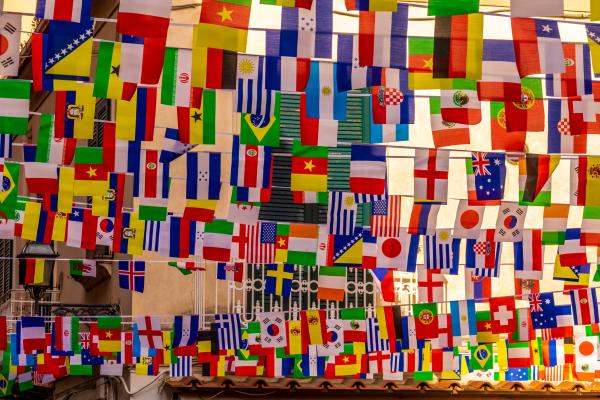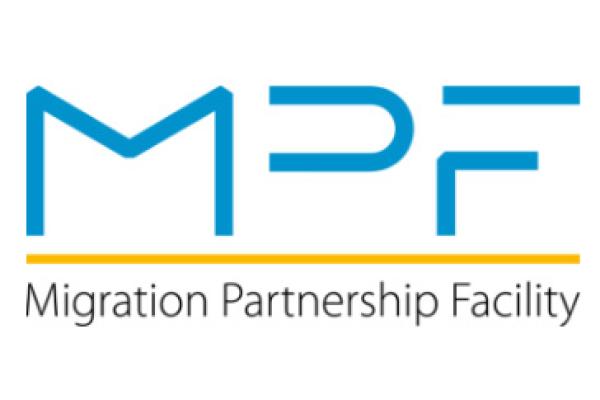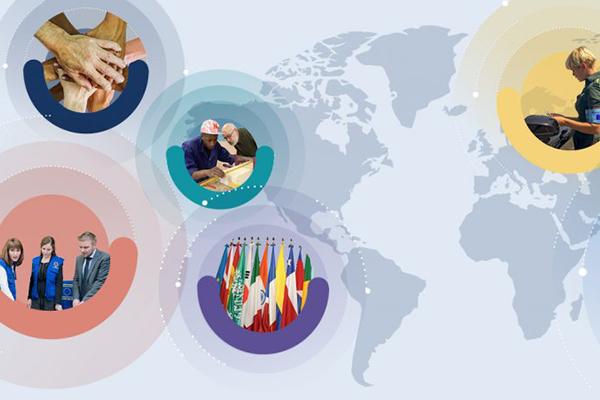The area of justice, freedom and security are of central priority in the EU's external relations, ensuring a coordinated and coherent approach, involving all relevant stakeholders. Cooperation with our partners is based on bilateral engagement, combined with regional and multilateral commitment.
Migration is a global phenomenon. No country can address the challenges and opportunities of migration on its own. To better manage migration and mobility and to better respond to security challenges, the EU needs to work with countries and international partners outside the EU at bilateral, regional and multilateral levels.
Protecting the EU and its citizens is no longer only about ensuring security within the EU borders, but also about addressing the external dimension of security. The EU’s approach to external security within the framework of the Common Foreign and Security Policy (CFSP) and the Common Security and Defence Policy (CSDP) remains an essential component of EU efforts to enhance security within the EU. Cooperation with third countries and at global level to address common challenges is central to an effective and comprehensive response.
The new Security Union Strategy 2020-2025 replaces the previous security strategy set out in the European Agenda on Security.It recognises the increasing inter-connection between internal and external security. The EU engages with non-EU countries to combat serious organised crime, drugs and firearms trafficking, trafficking in human beings, counterfeiting, fight against terrorism and terrorist financing, radicalisation and violent extremism, deterring and reacting to cyber-attacks and combating cybercrime.

Learn how the EU cooperates in areas of migration and home affairs with non-EU countries, such as Russia, China, Indian, the United States, Canada, and other countries across the world.

Governing migratory flows, fighting organised crime and terrorism require intense cooperation with international organisations, such as: UNCHR, IOM and OECD.

The Migration Partnership Facility (MPF) is an EU-funded initiative contributing to managing global migration and mobility.
The Pact on Migration and Asylum
On 23 September 2020, the European Commission presented a new Pact on Migration and Asylum, covering all of the different elements needed for a comprehensive European approach to migration.
Engagement of the European Union in migration with international partners at bilateral, regional and multilateral level is one of the key pillars of the Pact. The European Union is strengthening further its engagements beyond its borders and takes its responsibility as a global actor very seriously. In order to be successful, the European Union will continue to pursue close cooperation with partner countries, regional and multilateral organisations, in trust and open dialogue.
The Pact proposes to develop and deepen comprehensive, tailor-made and mutually beneficial migration partnerships with key countries of origin and transit, as part of its overall relations with these countries. These partnerships should be based on five concrete areas of action.
- Protecting those in need, supporting countries which host large number of refugees and strengthening their protection system.
- Building economic opportunities thereby contributing to addressing some of the root causes of irregular migration, in particular through trade, investments and development assistance.
- Helping partner countries’ to manage migration. This includes, help to improve migration governance, to address irregular migration, to combat migrant smuggling and trafficking in human beings and to reinforce border management.
- Fostering cooperation on readmission and reintegration - by mobilising all EU policies.
- Enhancing legal migration pathways by creating avenues for resettlement and complementary pathways, supporting establishing community or private sponsorship schemes and creating possibilities for legal and labour migration.
The Pact on Migration and Asylum builds upon the previous strategy covering the period 2015-2020, the European Agenda on Migration, presented in May 2015. The European Agenda on Migration intended to address immediate challenges and equip the EU with the tools to better manage migration in the medium and long term in the areas of irregular migration, borders, asylum and legal migration. The European Agenda on Migration has guided the EU's response to immediate challenges.
In 2016, the Partnership Framework under the European Agenda for Migration was launched as the EU's comprehensive approach to address the challenges of irregular migration and its root causes as part of the broader cooperation with our partners.
External aspects of the EU’s migration have been central to the European Agenda on Migration. Reinforce cooperation with partner countries has been a key objective in the past years, both for better managing the flows of irregular migrants and for addressing some of the root causes of irregular migration and forced displacement. The European Commission has been engaged in building migration partnerships with countries of origin, transit and destination. Long-term partnerships with these countries are key to facilitating return and reintegration, to assisting refugees and stranded migrants, to cooperating on the fight against human trafficking and migrant smuggling networks, and to addressing the root causes of irregular migration.

Funding
EU funding for refugees and migration issues outside the EU amounts to over €9 billion since 2015. It is indispensable to the delivery of the EU’s migration objectives. In July 2020, the European Council underlined that funding shall be developed further in a more coordinated manner through programmes across the relevant headings of the EU budget.
Strategic, policy-driven programming of the EU’s external funding will be essential to implement the new comprehensive approach towards migration. The 10% target for migration-related actions proposed in the Neighbourhood, Development and International Cooperation Instrument recognises that resources need to match the needs of the EU’s increased international engagement, as well as being sufficiently flexible to adjust to circumstances. The proposed architecture of the EU’s external financial instruments also provides for additional flexibilities to respond to unforeseen circumstances or crises.
Global Approach to Migration and Mobility
Since 2005, the EU's Global Approach to Migration and Mobility (GAMM) has provided an overarching framework for EU external asylum and migration policy. It defined how the EU conducted its policy dialogues and cooperation with non-EU countries, based on clearly defined priorities and embedded in the EU’s overall external action, including development cooperation.
GAMM has offered a balanced and comprehensive approach, aimed at 4 equally important objectives:
- better organising legal migration, and fostering well-managed mobility,
- preventing and combating irregular migration, and eradicating trafficking in human beings,
- maximising the development impact of migration and mobility,
promoting international protection, and enhancing the external dimension of asylum.
Cooperation frameworks under the GAMM
The most elaborated bilateral cooperation frameworks under the GAMM were the Mobility Partnerships (MP) and Common Agendas for Migration and Mobility (CAMM).
They both:
- offer a political framework for comprehensive, enhanced and tailor-made dialogue and cooperation with partner countries, including a set of targets and commitments as well as a package of specific support measures offered by the EU and interested member countries,
- address mobility issues, including where appropriate visa issues, as well as the need to facilitate return and readmission of irregular migrants.
However, there are two differences between the frameworks:
- establishing a MP includes the negotiation of visa facilitation and readmission agreements, whereas a CAMM does not,
- a MP is mainly used vis-à-vis neighbourhood countries, whereas a CAMM is in place mainly for other third countries.
Nine Mobility Partnerships were signed: with Cape Verde, the Republic of Moldova, Georgia, Armenia, Morocco, Azerbaijan, Tunisia, Jordan and Belarus.
Three Common Agendas on Migration and Mobility have been signed with Ethiopia, Nigeria and India.
The Mobility Partnership Facility (MPF) is an EU-funded initiative contributing to the strengthening of cooperation between the European Union (EU) and partner countries that signed a Mobility Partnership (MP) or a Common Agenda on Migration and Mobility (CAMM).
Geographic priorities
Geographic priority is given to specific countries and regions.
Enlargement countries
Countries in the Western Balkans and Turkey are important countries of origin and transit of irregular migration to the EU (Western Balkans route, Eastern Mediterranean route). Turkey is the country that hosts the largest refugee population in the world. For these reasons, it is an important country for the EU regarding migration cooperation.
The EU helps candidate and potential candidate countries in developing their national legislation in line with the EU acquis, as well as to strengthen their administrative capacities to implement it.
The EU’s Neighbourhood
Some of the countries in the Eastern and Southern Neighbourhood (Central Mediterranean and Western Mediterranean Route) are important countries of origin and transit of irregular migration to the EU. Some countries are destination countries or host large number of people in need of protection. For these reasons, they are priority countries for the EU regarding migration cooperation. In the security area, the focus is on the security sector reform as well as the fight against terrorism, corruption, serious and organised crime and cybercrime.
The EU aids Neighbourhood countries in more efficient management of borders and migration flows, and, where appropriate, supports the mobility of people through the conclusion of mobility partnerships, visa facilitation agreements and by conducting visa liberalisation dialogues.
Strategic partners
The EU gives special attention to maintaining the transatlantic dialogue with the United States and Canada, the implementation of the Common Space on Freedom, Security and Justice with Russia, and to increasing strategic cooperation with other strategic partners.
Sub-Saharan African countries are important origin and transit countries of irregular migration to the EU and for this reason, they are priority countries for the EU regarding migration cooperation. Some countries are also important partners in security cooperation, in particular in fighting serious and organised crime and terrorism.
Silk Route countries are important origin and transit countries of irregular migration to the EU and for this reason, they are priority countries for the EU regarding migration cooperation.
Particular importance is attached to developing cooperation with international organisations, especially United Nations agencies, UNHCR and IOM and the African Union.
